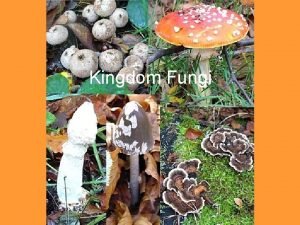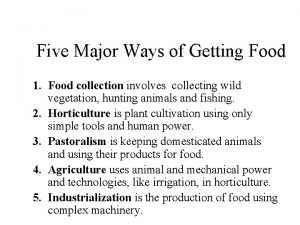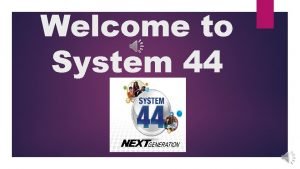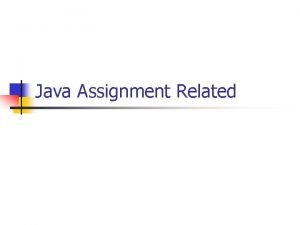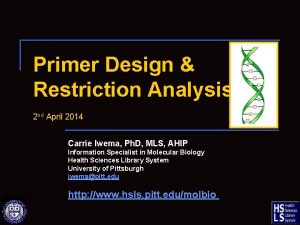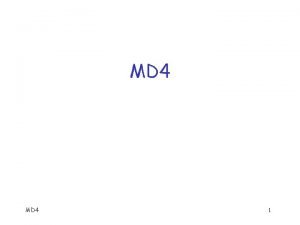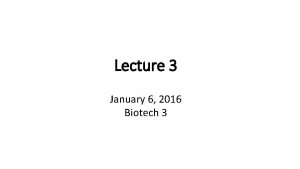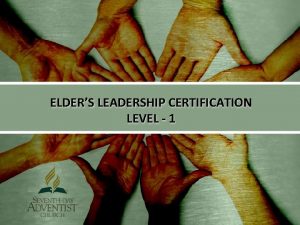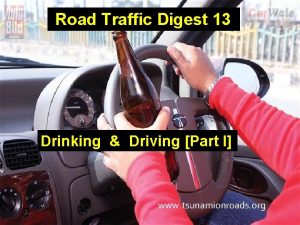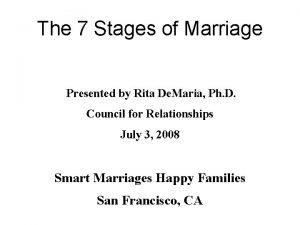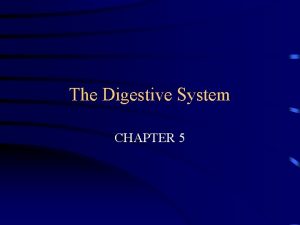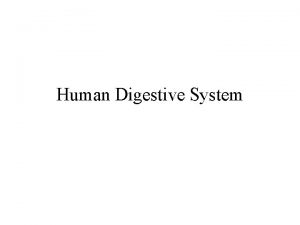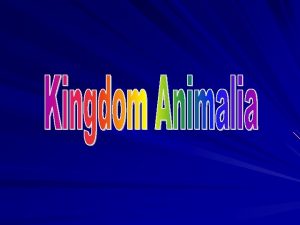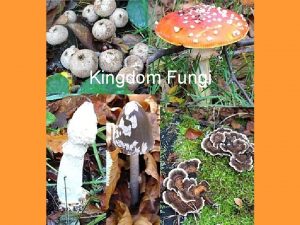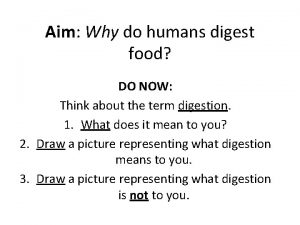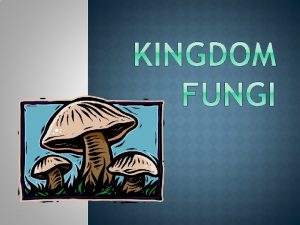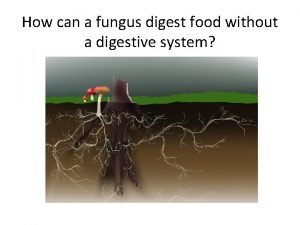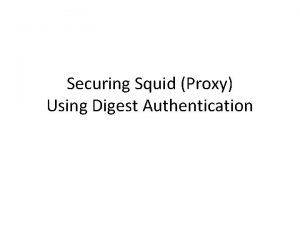Getting Using Food Ingest taking in food Digest
























- Slides: 24

Getting & Using Food Ingest taking in food Digest mechanical digestion breaking up food into smaller pieces chemical digestion breaking down food into molecules small intracellular digestion enough to be absorbed into cells enzymes (hydrolysis) Absorb absorb across cell membrane diffusion active transport Eliminate undigested extracellular material passes out of digestive system extracellular digestion

Purpose of Digestion Convert large molecules into smaller ones cable of being used by the cell.

How do animals get their food? filter (suspension) feeding substrate feeding fluid feeding bulk feeding

Digestive systems Everybody’s got one!

Parts of the body

Common processes & structures Movement & Control peristalsis push food along by rhythmic waves of smooth muscle contraction in walls of digestive system sphincters muscular ring-like valves, regulate the passage of material between sections of digestive system Accessory glands salivary glands, pancreas, liver & gall bladder secrete digestive juices (enzymes & fluid)

Swallowing (& not choking) Epiglottis problem: breathe & swallow through same orifice flap of cartilage closes trachea (windpipe) when swallowing food travels down esophagus Esophagus move food along to stomach by peristalsis

Mouth Ingestion mechanical digestion teeth breaking up food chemical digestion saliva amylase enzyme digests starch

mouth break up food moisten food digest starch kill germs

Stomach Functions food storage can stretch to fit ~2 L food disinfect food HCl = p. H 2 kills bacteria breaks apart cells chemical digestion pepsin enzyme breaks down proteins secreted as pepsinogen activated by HCl But the stomach is made out of protein! What stops the stomach from digesting itself? mucus secreted by stomach cells protects stomach lining Ooooooh! Zymogen!

mouth break up food moisten food digest starch kill germs stomach kills germs store food break up food digest proteins cardiac sphincter pyloric sphincter

Function Small intestine major organ of digestion & absorption chemical digestion digestive enzymes absorption through lining over 6 meters! small intestine has huge surface area = 300 m 2 (~size of tennis court) Structure 3 sections duodenum = most digestion jejunum = absorption of nutrients & water ileum = absorption of nutrients & water

Absorption by Small Intestines Absorption through villi & microvilli finger-like projections increase surface area for absorption Ooooh… Structure-Function theme!

Duodenum 1 st section of small intestines acid food from stomach mixes with digestive juices from accessory glands: § pancreas § liver § gall bladder

Pancreas Digestive enzymes peptidases trypsinogen chymotrypsin chimotrypsinogen carboxypeptidase procarboxypeptidase pancreatic amylase Buffers reduces acidity alkaline solution rich in bicarbonate (HCO 3 -) buffers acidity of material from stomach small intestines

mouth break up food moisten food digest starch kill germs pancreas produces enzymes to digest proteins & starch stomach kills germs break up food digest proteins store food

Liver Digestive System Functions produces bile stored in gallbladder until needed breaks up fats act like detergents to breakup fats Circulatory System Connection bile contains colors from old red blood cells collected in liver = iron in RBC rusts & makes feces brown

mouth break up food moisten food digest starch kill germs liver produces bile - stored in gall bladder break up fats pancreas produces enzymes to digest proteins & starch stomach kills germs break up food digest proteins store food

Absorption of Nutrients Passive transport fructose Active (protein pumps) transport pump amino acids, vitamins & glucose against concentration gradients across intestinal cell membranes allows intestine to absorb much higher proportion of nutrients in the intestine than would be possible with passive diffusion worth the cost of ATP! nutrients are valuable… grab all you can get!

mouth break up food moisten food digest starch kill germs liver produces bile - stored in gall bladder break up fats pancreas produces enzymes to digest proteins & starch stomach kills germs break up food digest proteins store food small intestines breakdown all foods - proteins - starch - fats - nucleic acids absorb nutrients

Large intestines (colon) Function re-absorb water use ~9 liters of water every day in digestive juices > 90% of water reabsorbed not enough water absorbed back to body diarrhea too much water absorbed back to body Constipation http: //www. youtube. com/watch? NR=1&v=cdijh 32 Ni. Ls&feature=fvwp

You’ve got company! Flora of large intestines Living in the large intestine is a rich flora of harmless, helpful bacteria Escherichia coli (E. coli) a favorite research organism bacteria produce vitamins vitamin K; biotin, folic acid & other B vitamins generate gases by-product of bacterial metabolism methane, hydrogen sulfide

Rectum Last section of colon (large intestines) eliminate feces undigested materials extracellular waste mainly cellulose from plants roughage or fiber

mouth break up food moisten food digest starch kill germs liver produces bile - stored in gall bladder break up fats pancreas produces enzymes to digest proteins & carbs stomach kills germs break up food digest proteins store food small intestines breakdown food - proteins - starch - fats absorb nutrients large intestines absorb water
 Getting ahead
Getting ahead Fungi digest food
Fungi digest food Taking leave expressions
Taking leave expressions Ways of getting food
Ways of getting food System 44 decodable digest
System 44 decodable digest Message digest java
Message digest java Boat digest
Boat digest South forsyth parent portal
South forsyth parent portal Nebcutter
Nebcutter Message digest 4
Message digest 4 Caperatio
Caperatio Sha256digest
Sha256digest Job search digest
Job search digest Boat digest
Boat digest Visual field digest
Visual field digest Visual field digest
Visual field digest Neb webcutter
Neb webcutter Elders digest
Elders digest Traffic digest
Traffic digest Risks digest
Risks digest Secretory tissue
Secretory tissue Visual field digest
Visual field digest Visual field digest
Visual field digest Stages of marriage
Stages of marriage Icra digest slide
Icra digest slide

